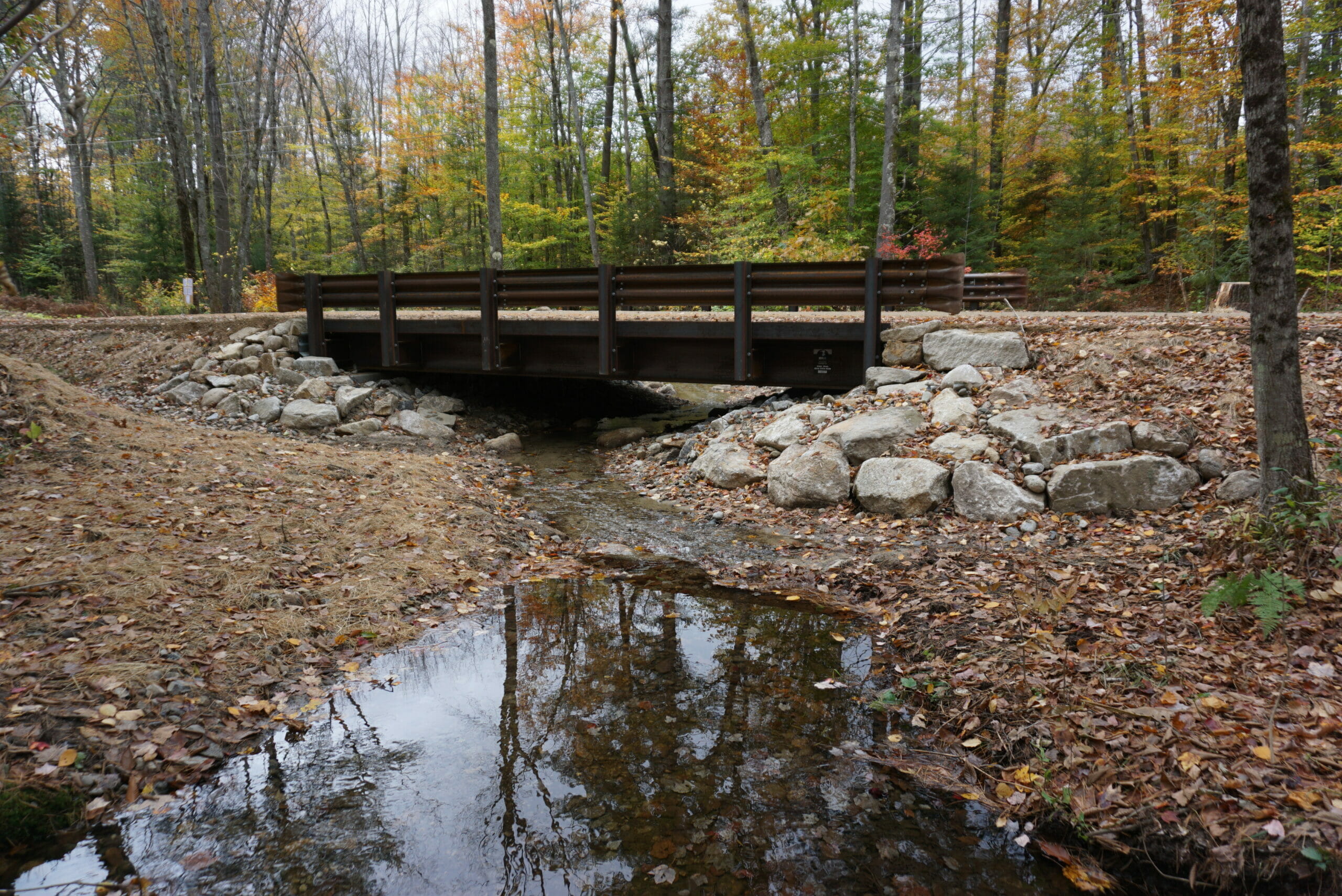For Trout Unlimited crews, restoring streams means persisting through every manner of calamity
It’s another muggy August day and Erin Rodgers is in her element, walking along a brook in New Hampshire looking at how a habitat enhancement project on the stream held up through high water from a recent thunderstorm.
A few hundred miles away, Jeff Reardon and a small team are at work chopping trees to place in a stream deep in the Maine Woods.
Down in Connecticut, Tracy Brown watches as contractors move huge boulders into place to shore up the banks of Salmon Creek.
From spring thaw to the first snow of late fall, crews of TU staff in the East—often with volunteer help from TU members and supporters—spend long days of long weeks working to improve coldwater habitat, be it restoration of damaged streams, removing fish-blocking barriers, or improving the health of riparian corridors.
After dealing with challenging permitting processes, funding acquisition and complicated logistics coordination just to get the work planned, they then deal with issues ranging from weather delays, to supply chain shortages, to swarming black flies and mosquitos.
Snakes? Those, too.
Still, the work gets done. Each fall, TU tallies the totals. Hundreds of stream miles restored. Hundreds of acres of riparian corridors protected and / or replanted. Not to forget the hundreds of hours spent advocating for investments in coldwater resource protection and restoration.
Over the next few weeks we’ll be rolling out some highlights from the East. First up are some stories from New England.
Deerfield River, Massachusetts
The Deerfield River Watershed Chapter continues its efforts to study the river’s wild trout population, including spawning activity and fish movement, with the goal of improving flow regimes to benefit trout. Some exciting news is forthcoming on that effort and we’re eager to share that information when the time is right.
Concurrently, the TU field crew staff got to work with the chapter to improve large woody habitat in Rice Brook. After identifying the stream as a thermal refuge for trout — excellent groundwater inputs that keep the stream cold year-round — the chapter got in touch with the primary landowner, the Warfield House Inn, and several surrounding landowners to secure their buy-in and permission to work on their land.
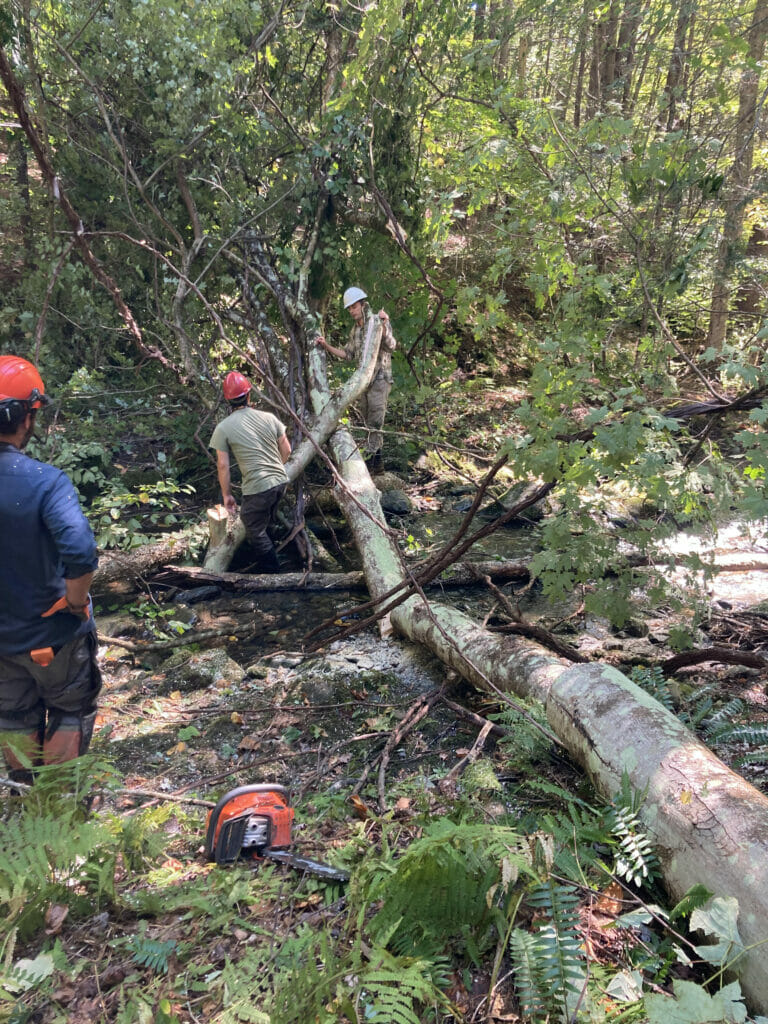
They secured the permits and the project coordinator secured funding through a National Fish and Wildlife Foundation grant. The chapter has also been e-fishing the stream and setting data loggers in partnership with USGS Sylvio O. Conte Research Lab to monitor the trout population before and after the large wood installation. To learn more, visit this great interactive map of the woody habitat work completed so far.
Beebe River watershed, New Hampshire
After two years of limited activity due to Covid-related restrictions, our New Hampshire team finally got back into the field to do what we do best — rebuilding and restoring aquatic habitat.
Our highlight project from New Hampshire is the Perch Pond Road restoration effort in Campton. This project was a continuation of our ongoing efforts to restore complete connectivity for aquatic organism passage across the entire Beebe River watershed, a river system located along the southern border of the White Mountain National Forest.
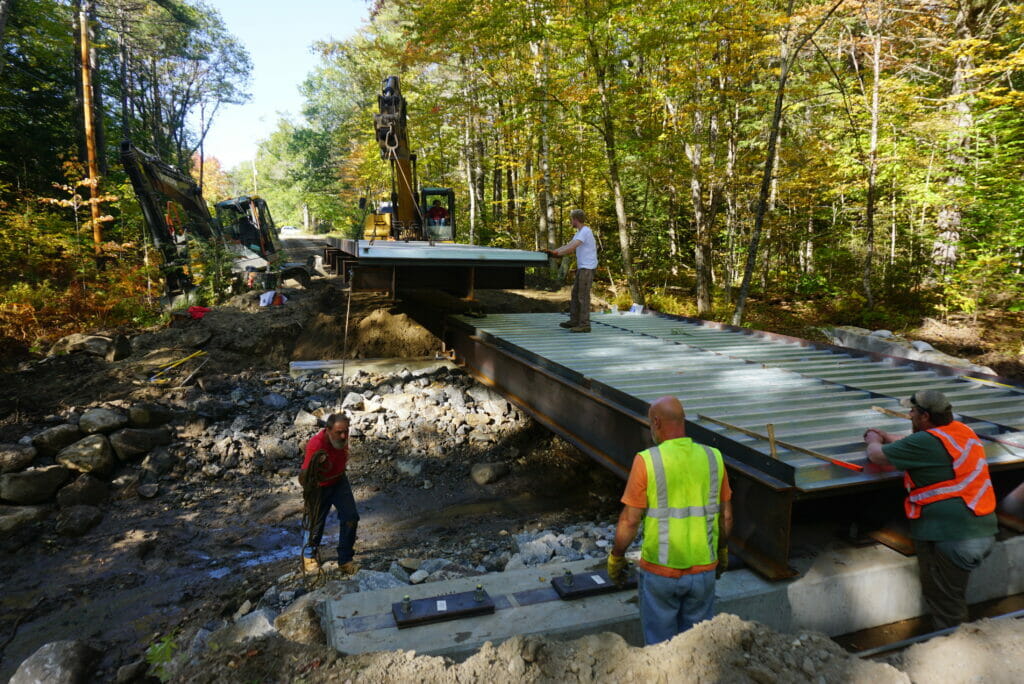
This past season we worked with the Town of Campton, New Hampshire Fish and Game, the Grafton County Conservation District, and the Webster Land Group to install a 30-foot bridge across one of the last three impassable aquatic barriers throughout the entire watershed.
It was a great project reconnecting an additional 7 miles of instream habitat throughout this Beebe River tributary. The accompanying map shows just how impactful this reconnection work has been in expanding habitat available to the system’s native brook trout for spawning and thermal refugia.
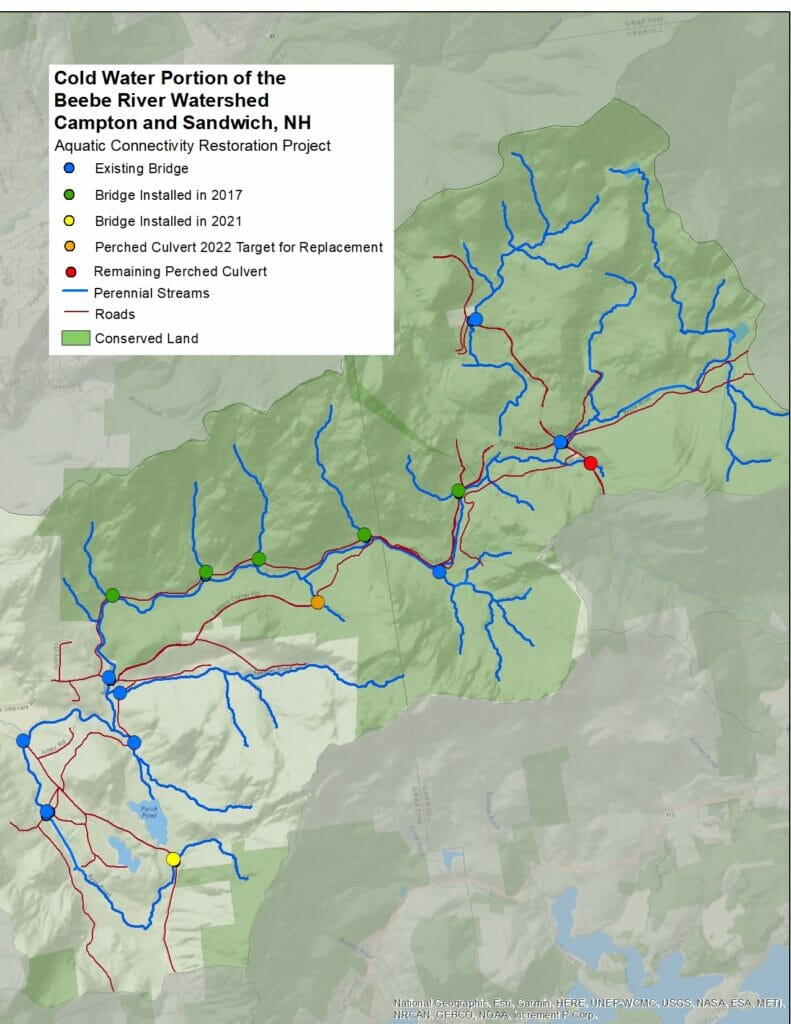
As we wrap up this project, we will be installing another mile of strategic wood additions in this drainage in 2022 to rebuild the instream habitat to further benefit trout.
Salmon Creek restoration, Connecticut
Since 2012, TU has partnered with the local community and private landowners to complete the Salmon Creek Enhancement and Restoration Project with a grant secured from the General Electric Natural Resource Damages (NRD) fund administered by the Connecticut Council of Trustees.
Additional funding from the NRD was secured in 2018 to finish the full scope of the Salmon Creek work. To date we have completed 24 projects along Salmon Creek, including two projects completed in 2021 that extended our previous work at the Lime Rock Park Raceway.
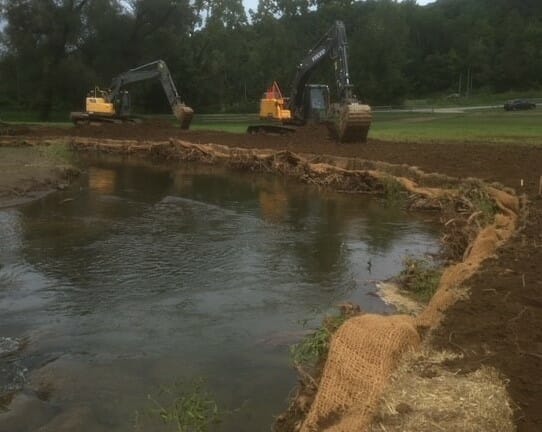
This year will be our final year working on Salmon Creek, and we will wrap up this work with a five-year summary of our monitoring data to determine how we did and to see how our work has contributed to improving habitat for native and wild trout.
Salmon Creek — also known as the Salmon Kill — is a tributary to the Housatonic River. Improving habitat in such tributaries can help provide trout with coldwater refuge when the main river warms up during the summer. That approach will continue as TU moves its focus to Macedonia Brook, another important trib to the Housey.
Learn more about TU’s on-the-water projects.



